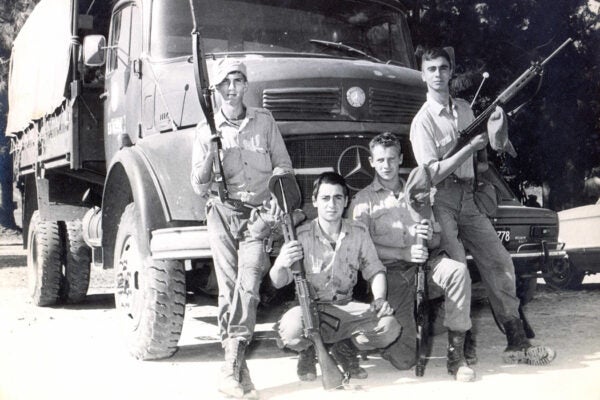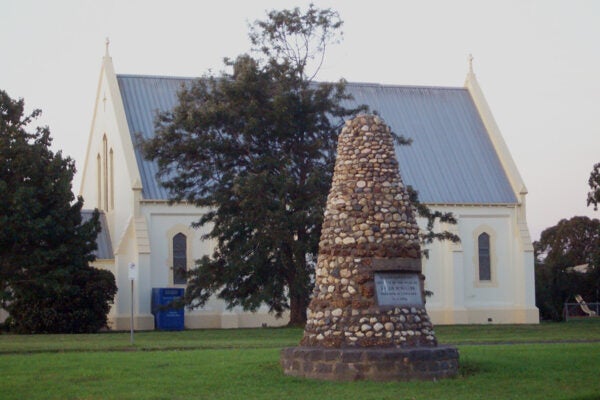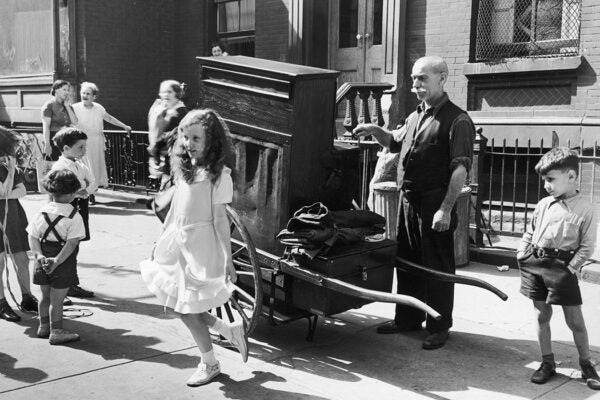In the aftermath of the Civil War, one of the tasks facing the US Department of Agriculture was to establish the state of farming in the South and work on plans to develop the region. Oliver Hudson Kelley, Freemason and former farmer in Minnesota, was a clerk of the department. Dispatched by President Andrew Johnson, he was to talk to farmers south of the Mason Dixon and survey the situation. It was his position as a Freemason that opened doors to southern homes and farms, and he realized such a network would be an important aid in building cooperation.
As historian William D. Barns, writing in 1967, recounts, Kelley struck on a plan to help farmers rebuild.
“In the course of his travels he wrote to his niece, Miss Carrie A. Hall,” Barns writes, about his “idea of a Secret Society of Agriculturists, as an element to restore kindly feelings among the people.” Thus, on his return to Washington, Kelley recruited several colleagues who would become the founding members of National Grange of the Order of Patrons of Husbandry, known informally as “The Grange.”
“[T]he group chose the first officers of the National Grange,” Barns writes. There was
Master, William Saunders; Overseer, Anson Bartlett; Lecturer, John Richardson Thompson; Steward, William Muir; Assistant Steward, A. Sherwood Moss; Treasurer, William M. Ireland; and Secretary, Oliver Hudson Kelley. Four of the seven—Saunders, Thompson, Ireland, and Kelly—were then federal employees and residents of Washington, DC. These four, along with the Reverend John Trimble, Jr., who was also a government clerk and dweller in the District of Columbia, are generally regarded by the National Grange as among the seven “founders of the Order.”
With the key office-holders in place, the men tried to create a structure that could spread across the country. Helen T. Finneran, archivist, details the original organization of the group. Not surprisingly, she writes, the structure drew on that of the Freemasons, and “[t]he plan included a Masonic ritual, with provision for a series of degrees and admission to membership of both men and women.”
The organization, though centralized with a national office, would draw its strength from “subordinate” granges, which corresponded to townships and offered members four “degrees” of membership; full membership came with the fourth degree. If fifteen subordinate granges were founded within a state,
they might organize a State grange, which could confer the fifth degree. The National Grange, to consist of masters and past masters of State granges, was authorized to confer the sixth degree. Members of the sixth degree were to constitute the National Grange, and after serving one year they might take the seventh degree and become members of the senate, which had control of the esoteric work of the Order.
This level of arcane ritual seems odd today, but it was in keeping with the character of Freemasonry and other fraternal organizations of the period, with which potential Grange members would have been familiar. To men of the nineteenth century, this was an understood model of social and mutual-support organizations. According to Finneran, “[t]he membership grew to 868,050 in 1875, with its greatest strength in Missouri, Indiana, Ohio, and Iowa.”
The Grange’s mission soon expanded to improving all areas of agricultural life, Finneran writes. The order
encouraged farmers’ institutes, advocated the teaching of agriculture in the public schools, and helped to obtain the establishment of State agricultural experiment stations and of rural mail delivery and the parcel post system. The organization was opposed to fraud and adulteration in food processing, called for forest conservation, fostered crop reporting, and advocated ballot reform. The social activity fostered by the Grange was very real contribution to the quality of living of rural areas.
In southern states, it emphasized the importance of education. According to James S. Ferguson, who in 1942 analyzed the role of the Grange in Mississippi, one challenge for the Grange was not just that farmers had limited agricultural knowledge, but many were illiterate. Grange efforts saw a brief burst of engagement, but success was limited. Arriving in Mississippi in 1871, the Grange was no longer active in the state by 1898.
Nonetheless, while it operated, Grangers focused on education, encouraging higher quality teaching at the public-school level and the offering of specific training to farmers.
“The efforts of the Grange to promote education were directly responsible for the establishment of present-day Mississippi State College,” writes Ferguson. “Agitation for a purely agricultural and mechanical school grew out of farmers’ displeasure with the state’s use of the land script made available by the Congressional act of July 2, 1862.”
Grange meetings were also a way for farmers to gather, socialize, and gain useful information.
Weekly Newsletter
“The monthly or fortnightly meeting of the local grange was the hub of the practical educational program,” Ferguson writes. Through these meetings,
the people of the community were brought together to share their thoughts and their facts to the benefit of all. Meetings were conducted in a strictly parliamentary manner. This in itself was valuable training to the unlettered farmer and enabled him, one writer said, to take his place in public life alongside those of the so-called white-collar professions.
As the twentieth century aged, Grange membership declined, reflecting the shrinking numbers working in agriculture. But it still has a role to play in rural communities, even if today people have forgotten the significance of free rural postal delivery and affordable rail freight for the small farmer of a century ago. As public health scholars Lilly L. Anderson, Veronica L. Irvin, Susan Noah, and Jay Sexton found in 2020, the Grange’s networks are an important tool in sharing public health information and addressing community concerns.
“Grange activities and interests closely align with the goals and objectives of public health,” they write. But
[t]his finding should not be surprising upon reviewing the history and evolution of the Grange. The Grange began as an organization devoted to educational activities and self-improvement, and quickly placed the health and wellbeing of the community as one of its highest priorities. While the Grange has continued with these activities throughout the years, they remain an underused and often an unknown resource to public health agencies working in rural areas.
Although it has long abandoned the secret meetings and arcana of the nineteenth century, it was through using a traditional structure that the Grange managed to gain a foothold in rural areas, allowing it to still play an important role in agricultural communities today.
Editor’s note: This story was updated to correct a typographical error; William D. Barns does not have an “e” in his surname.







